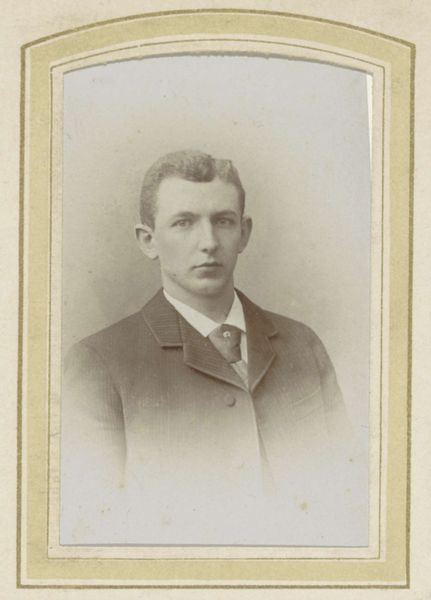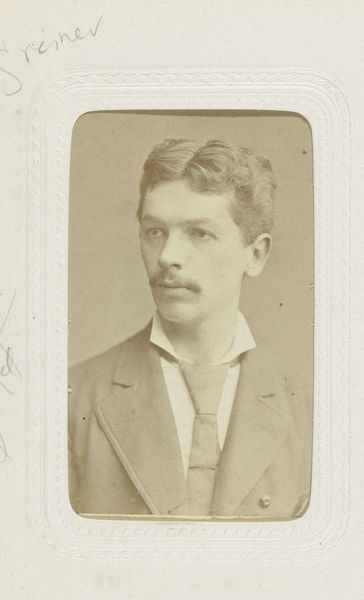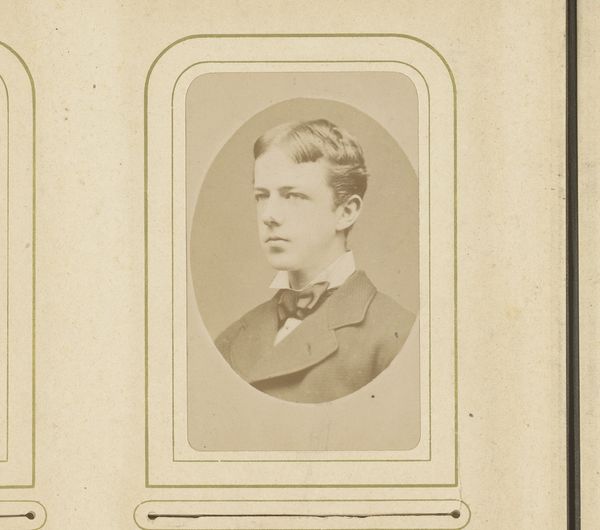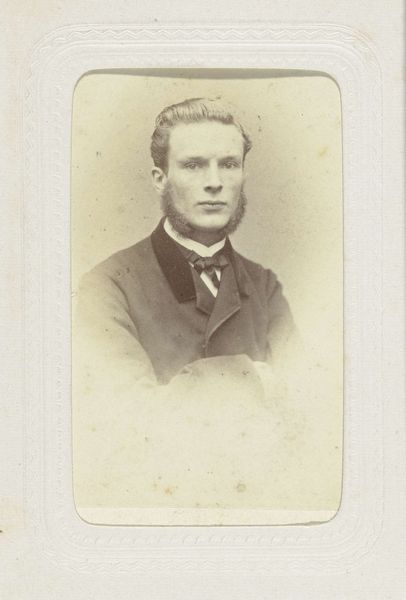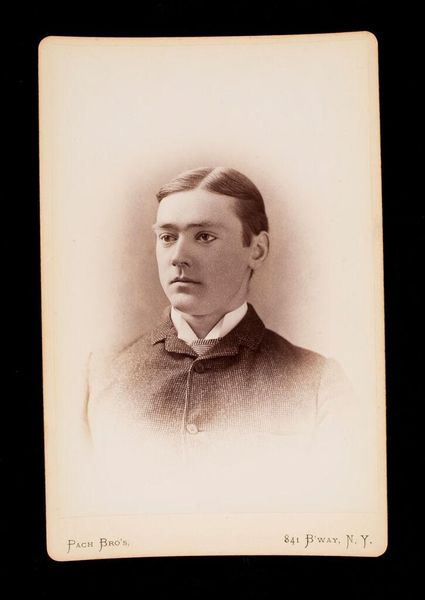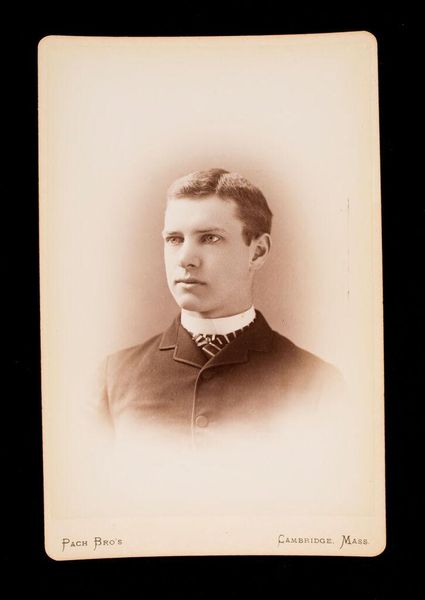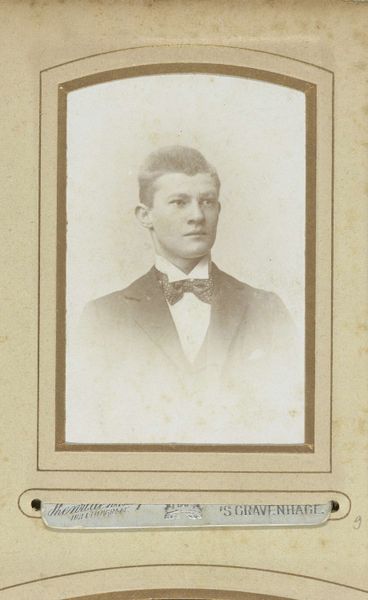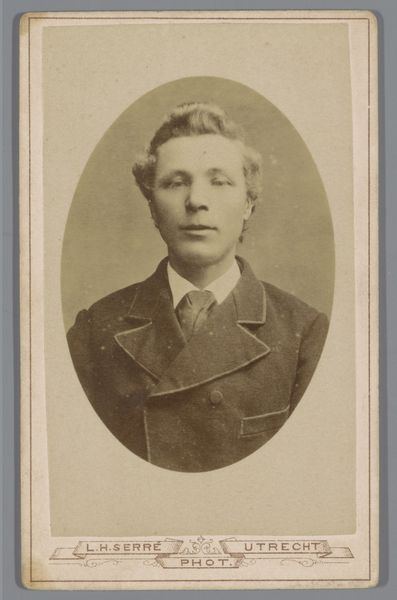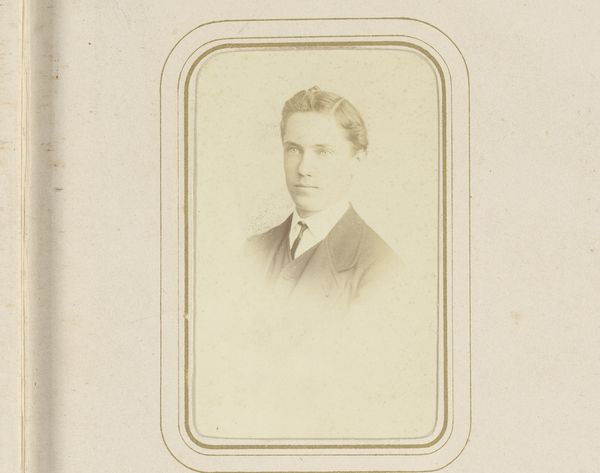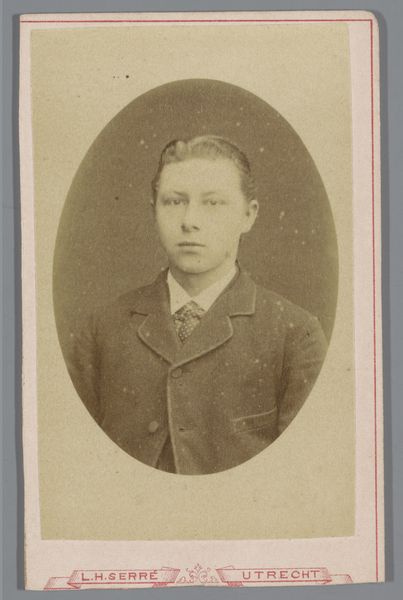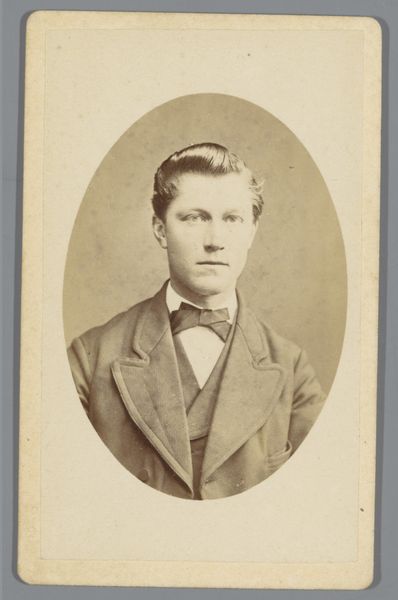
photography, gelatin-silver-print
#
portrait
#
photography
#
historical photography
#
gelatin-silver-print
#
19th century
#
portrait drawing
#
realism
Dimensions: height 86 mm, width 55 mm, height 105 mm, width 63 mm
Copyright: Rijks Museum: Open Domain
Editor: Here we have a photograph entitled "Portret van een jongeman," created sometime between 1867 and 1904, attributed to Johannes Ephraim. It’s a gelatin silver print and it feels very much of its time; there's a formal almost stoic quality to it. What social dynamics do you think were in play that might have affected portraiture during that era? Curator: Well, portraits like these became more accessible as photography became democratized. Previously, portraiture was primarily the domain of the wealthy. The rise of photography studios meant that the middle class could also commission images, reinforcing their social standing and projecting an image of respectability. Consider the setting: everything down to the subject’s tie speaks volumes about presenting a particular kind of self. Who do you think this photograph was made for? Editor: I suppose for the sitter himself, or his family, to showcase and preserve his likeness. But wasn't there also a rise in displaying such images more publicly? Curator: Precisely. The mass production of photographic prints led to the emergence of cartes de visite, small, easily shared portraits that circulated within social networks, akin to a nineteenth-century social media profile. Think about how the photograph would be displayed. What does the sitter’s posture and dress convey about the social expectations of young men during that time? Editor: He looks respectable, almost aspiring to something beyond his current station. It’s a very controlled and deliberate image. Curator: Exactly. And consider the power dynamics inherent in portraiture itself. Who has the power to commission a portrait? Who gets to decide how the sitter is represented? It’s not merely a neutral recording; it's a carefully constructed performance of identity. Editor: That makes me look at it completely differently! It’s a window into the values and aspirations of a bygone era. Curator: And a reminder that even seemingly straightforward images are loaded with social and cultural meaning, waiting to be unpacked.
Comments
No comments
Be the first to comment and join the conversation on the ultimate creative platform.
